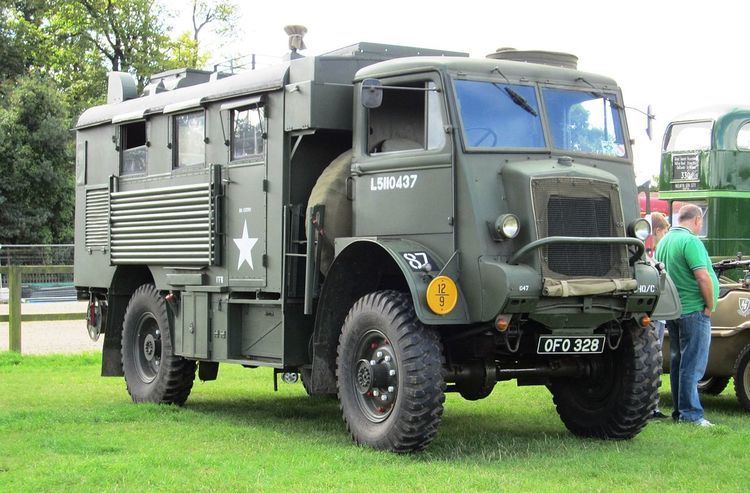Place of origin United Kingdom Wars Second World War No. built 52,247 | Produced 1941-1945 | |
 | ||
Manufacturer | ||
The Bedford QL was a series of trucks, manufactured by Bedford for use by the British Armed Forces in the Second World War.
Contents
History
At the outbreak of WW II, Bedford was contracted by the British War Office to produce a 3 tons 4 x 4 general service truck. A pilot model was ready in February 1940 and quantity production started in March 1941. The Bedford QL was in production from 1941 to 1945 and was Bedford's first vehicle series built for the military.
Variants
General service cargo truck and was the most numerous version in the series.
Lorry, 3 ton, GS Bedford half-track (Bedford-Bren - prototype only)
Following the fall of Singapore rubber was scarce and so at the request of the Ministry of Supply a Bedford QL was adapted using a Carden Lloyd suspension taken from a Bren Gun Carrier. While the Bedford-Bren was capable of impressive feats of tractive power (which could have been easily produced in its own right as a prime mover) British authorities, unlike the Americans and Germans, did not favour the half-track. The shortage of rubber was not as severe as anticipated and official interest in the project waned. Not only did this British parallel to the German Maultier not go into production, the single prototype was converted back into an all-wheel vehicle.
Lorry, 3 ton, 4 x 4, Bedford, experimental (Bedford Giraffe - prototype only)
An attempt to make a motor vehicle capable of deep wading for river crossings and amphibious landing, the Bedford Giraffe was developed as insurance against the shallow wading kits under development did not prove effective in deeper water. As a 'plan B' Vauxhall adapted a Bedford GL by mounting its engine, cab and gearbox on an elevated girder frame some seven feet high, with a chain drive transmitting power to the propshaft. The ungainly but effective vehicle demonstrated it was a viable solution should hastily extemporised waterproofing kits fail but they proved effective and so no specialised type was required.
